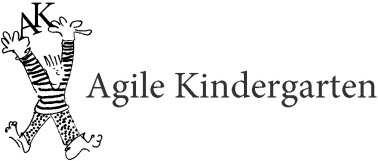Decision Making
Decision Making has been a topic that interested me since childhood. I suspect it started the day my mother walloped me with the wooden spoon as she was chasing my naughty little brother through the house. It was a quick “drive-by” spank. As she rushed off in pursuit of the guilty culprit, I loudly protested, “Why hit me? He’s the one who was naughty!” My mother’s harried response, “Because you were there!”
It was an answer. It certainly didn’t seem fair to me, but then again, fairness or the lack thereof is something that many of us can recall with ease – and not just from our childhoods. It does beg the question, how do people make decisions?
In business, there is a great emphasis on rational decision making. Making data driven decisions is the coin of the realm. Yet, often there is significant disagreement with the wisdom of those decisions. What one of us has never been on a team where we thought some of management’s decisions were no more rational than my harried mother’s? Still, the work goes on and we make the best of poor decisions.
Studies in cognitive psychology are proving that much of the decision making that seems to be based in rational thought, is actually more governed by emotions than objectivity. Confirmation bias distorts our interpretation of data and presentation influences our emotional response to the data. But, why?
Mercier and Sperber in Why do humans reason? Arguments for an argumentative theory demonstrate that rational reasoning with its perceived objectivity is nothing more than constructing an attractive or expedient argument, regardless of its validity. That heuristically, we are predisposed to accept the argument that is easier to support, even if it is a wrong choice…. and this is because rational reasoning isn’t about objectivity. Rational reasoning is about making an argument. Therefore, rational decision making is about choosing the argument that is most convenient to the mindset, or prejudices, of the decision maker at that moment in time.
Counter-intuitively, it seems that our folly may be in our emphasis on the “rational” in the decision making process. Rational thinking is a linear process. It is a model of reality, not reality itself. There simply are too many variables in play in most decisions for linear thinking. In a recent online discussion about how to choose the right systems model for any given problem, the final determination was that a model is just a model – not reality. Models are frequently useful, rarely perfect and always suspect.
Consequently, the question becomes, how do we improve our Decision Making? Bob Sample in The Metaphoric Mind emphasizes the constructivist learning approach with its empirical and collaborative behaviors as the best way to learn and to decide. Sample states that using analogy, positing what if statements and invoking sensory experiences taps into “left handed” thinking, i.e. the right hemisphere of the brain not used in rational thinking.
The Agile approach to decision making adds metaphoric thinking into the rational decision making the predominates the workplace. I like that. It fits with what I know about the Learning Process, that true learning is active and behavioral. It also, happily, fits with cognitive science.
Below are a few tips for improving decision making that is both Agile and whole-brained:
A. Mercier & Sperber’s research indicates that presenting 3 choices results in better decisions than when only 2 choices are offered. I discovered this for myself when I saw managers time and time again chose the loosing horse when the analysts and team knew the other choice was better. It seems to be a rational effort to “see both sides” that results in distortion. However, when there are 3 choices, that rational effort is less likely to kick in, not only improving decisions made, but also making it easier and faster for the decision makers to decide. I also discovered that offering 4 choices was guaranteed to stall any choice from being made. But don’t we all remember how we preferred multiple choice to True/False tests, and the ABC to ABCD version?
B. Having experts offer opinions in multiple rounds allows people to assimilate new information and self-correct based on feedback, thus improving the output. Known as the Delphi method, this approach is also seen in the peer review of scholarly articles. Planning Poker used to size work in Agile shops is a Delphi implementation. White Elephant is another Agile technique based on the Delphi method.
C. Using graphical representations of metaphors, like a tree, train or night sky, and language that evokes a sensory experience, such as pruning the backlog of work or making sense out of a constellation of batch jobs, will help engage the “left-handed” thought processes to balance the rational thinking. Great scientific insights have often begun this way, as with Einstein’s thought experiments involving riding a train and a beam of light.
Bottom Line: Use data and models, but also look for an alternate perspective, the third way. Step outside of the linear thought process to examine the much more nuanced reality.
BTW: I learned never to chase naughty children. It’s been a successful strategy.
creative thinking, decision making, metaphoric thinking, rational thinking, systems thinking




